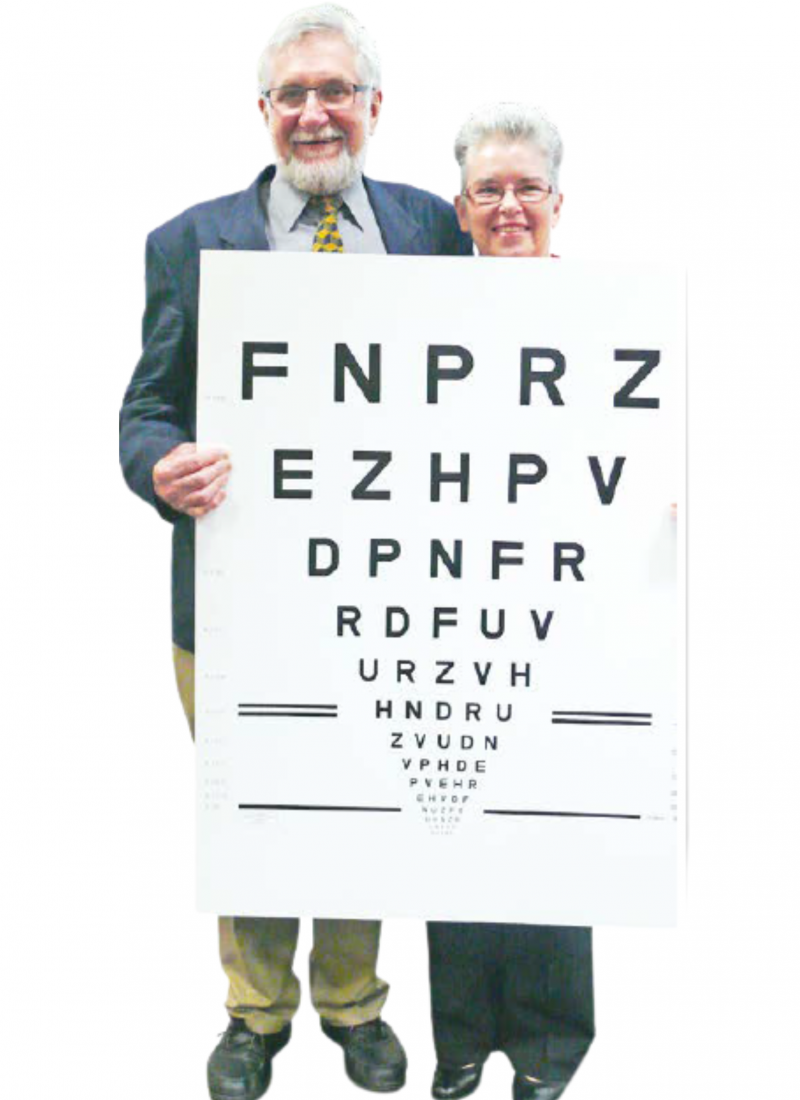Dr Ian Bailey was NVRI’s first full-time researcher and conducted its very first research project assisted by his graduate student, Jan Lovie. The project, “The visual performance and optometric management of patients with severe visual handicap due to low vision caused by age-related macular degeneration”, was funded by a grant from the National Health and Medical Research Council (NHMRC).
A need for accuracy in visual acuity measurement for people with low vision, led to the development of the Bailey-Lovie LogMAR chart, which garnered international applause and recognition. The highly cited paper titled “New design principles for visual acuity letter charts” was published in the American Journal of Optometry and Physiological Optics in 1976.
The advantages over the standard Snellen visual acuity chart were that each line had 5 equi-legible letters so that there was equal sampling at each level of visual acuity, letter and line spacing was proportional to letter size, and there was the orderly progression of letter sizes on a logarithmic scale. The principles behind this chart have now been adopted as the ‘gold-standard’ for visual acuity testing including by the United States National Academy of Sciences and the International Council of Ophthalmology.
In 2014, both Ian and Jan were given ACO Honorary Life Membership awards for their significant contributions to the optometry profession. Their initial research work at the NVRI has had a lasting impact on profession. It continues to be widely used in clinical and research settings by ophthalmologists, orthoptists, optometrists, and vision scientists to estimate visual acuity across the world and to this day is produced and sold by the NVRI.
View LogMAR Charts here.

Ian Bailey and Jan Lovie photographed at the 2014 ACO Awards ceremony












